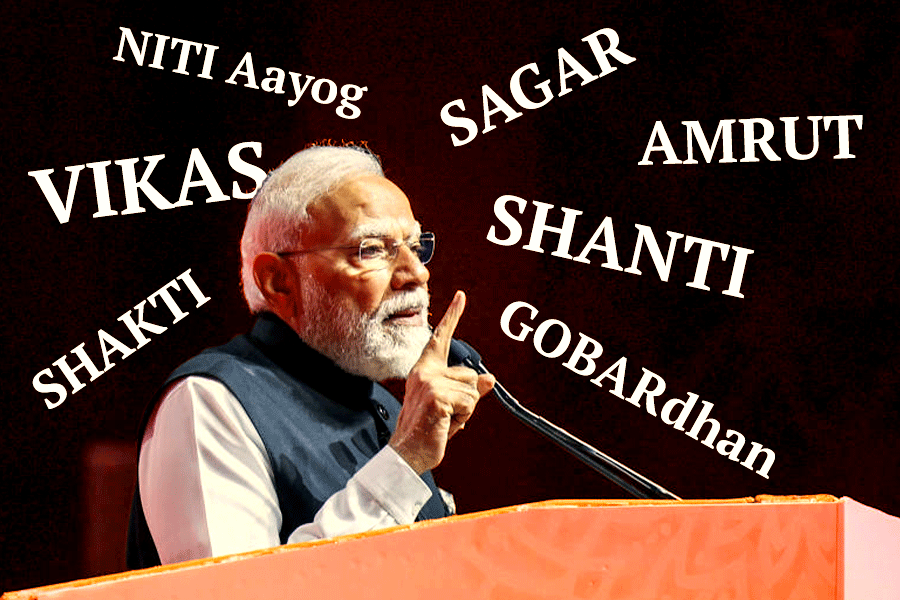 |
The desktop breakfast — which these columns dealt with a while ago — is only an aperitif in workplace eating etiquette. The real complications come with lunch. Dinner and the office party follow a different menu altogether.
There are several books on office eating etiquette. Executive Etiquette: In the New Workplace by Marjabelle Young Stewart and Marian Faux has a full section on Power Eating and another on the ABCs of drinking and eating. Power Breakfast and Power Lunch is joined by “Tea: The beginning of recivilisation as we used to know it”. For a more regional flavour try Business Etiquette: A Guide for the Indian Professional by Shital Kakkar Mehra. This is about much more than food, of course, but you will get instructive gems such as drop a mint before any meeting; use a mouthwash after any eating.
Others go for more specific advice. In the US, where everything is documented and surveyed, the American Dietetic Association (ADA) has discovered all the food fetishes of cubicle culture. Some 52 per cent of Americans bring lunch from home and eat it at their desk, while 23 per cent purchase lunch from a restaurant or cafeteria and eat it at their desk. A full 75 per cent think twice about bringing tuna fish sandwiches or potato chips to office. Strong-smelling foods and loud-eating foods should be avoided. (It is worth noting that advice given to job applicants at FMCG major ITC from seniors at the Indian Institute of Management (IIM) Calcutta included a stern instruction to avoid the papad. This was meant for prospective trainees who were also interviewed over lunch by the top brass when they reached the final shortlist stage. Eating noisy papad, you could easily hear gold fakes — the ubiquitous Ponzi variety — when the boss of the cigarettes division was talking about Goldflakes, the ubiquitous inhaled variety.)
The ADA goes on to say that other foods that should be avoided include steamed broccoli, asparagus, hard-boiled eggs and over-ripe bananas. “If you toss a banana peel in the garbage next to your desk, it can stink up the office quickly.” What the IDA does not say is what happens when you toss the banana peel next to your desk, but not in the garbage can. The fall guy — God forbid it’s a lady in a short dress — is not going to like you too much.
There is a health issue too. Etiquette coach Louise Fox is reported by CTV News as saying that there are 400 times more germs on a desk than the average toilet seat. Eating your leftover spicy chicken masala curry at your desk is a no-no.
If you go by what the experts say, eating in the office is itself a no-no for the upwardly mobile. The lunch has always been an activity for the hoi polloi. It’s historical. Reports TIME magazine: “There has always been an opportunity cost associated with lunch: if you’re taking a break to eat, you’re not making money for the boss. Even in the 1800s, in urban centres like New York, you were likely to see floods of men rushing from their offices, gobbling their meal at top speed, and rushing back to work.”
Take the rambling about etiquette out of lunch and the world divides itself into two — those who have lunch in the office and those who don’t. The former bother about the smell of Yera Chettinad (prawns to the uneducated); the latter concern themselves with flesh, not fish — the rat race. (They eat rats in France, but those that are fatted in wine cellars.)
For the office rat, the convention is that you can have lunch with your coworkers; that’s in the early days. Then you have lunch outside, preferably with clients not colleagues. (The pricier the restaurant, the better.) The CEO has his driver or secretary bring in his lunch, with tablecloths and homemade frills. You eat at your desk too, disobeying the commandments made for lesser folks. In some offices, the top brass feed at the officers’ mess. But the aura they acquire in the organisation is not an angelic halo but that made of rancid onion rings.
MENU FOR THE AVERAGE
The norms that ordinary employees should follow for lunch
• Don’t litter; always clean up your leavings.
• Don’t reheat odorous food. “No one wants to smell what you’re eating.”
• No one must be aware that you are scarfing down food in your cubicle.
• Label your own food in airtight containers before placing it in the communal fridge.
• If people still take your food (from the fridge), complain but don’t make a fuss.
• Don’t leave dirty dishes around.
• Don’t eat in front of others.
Source: Edited from The rules of office lunch etiquette (you’re probably breaking one right now), the Toronto Globe and Mail.











